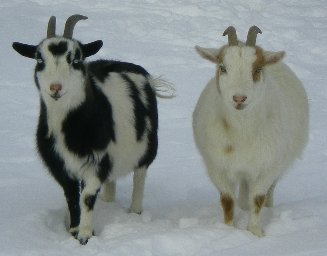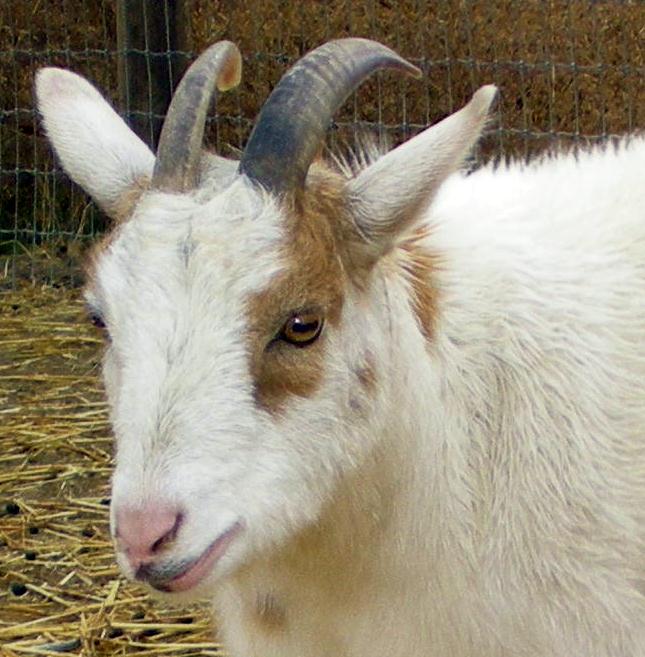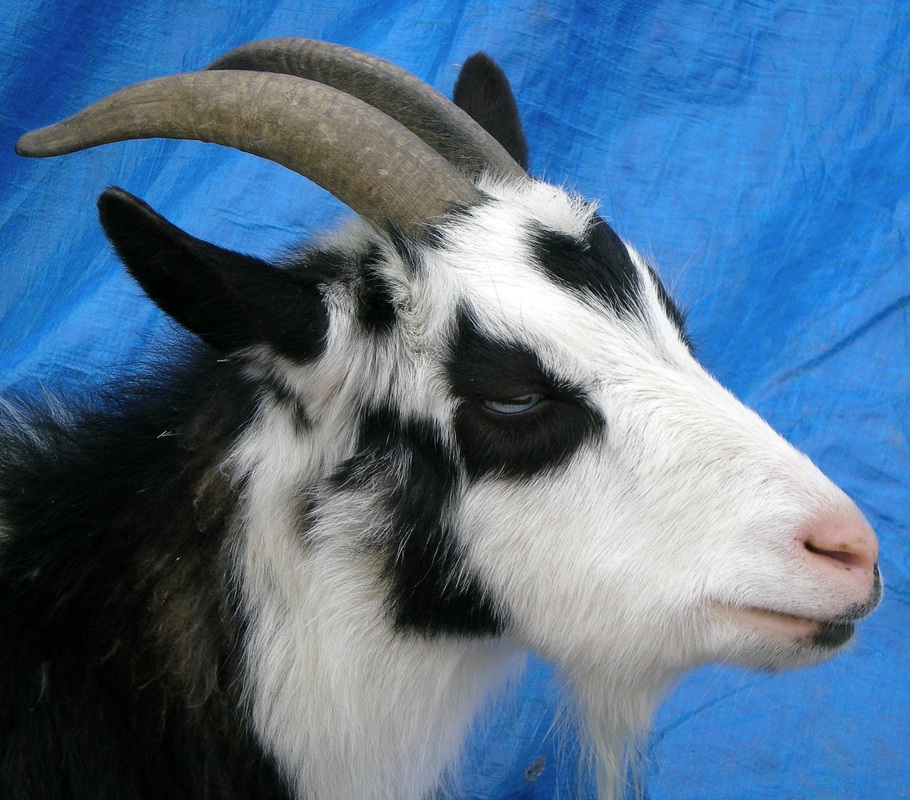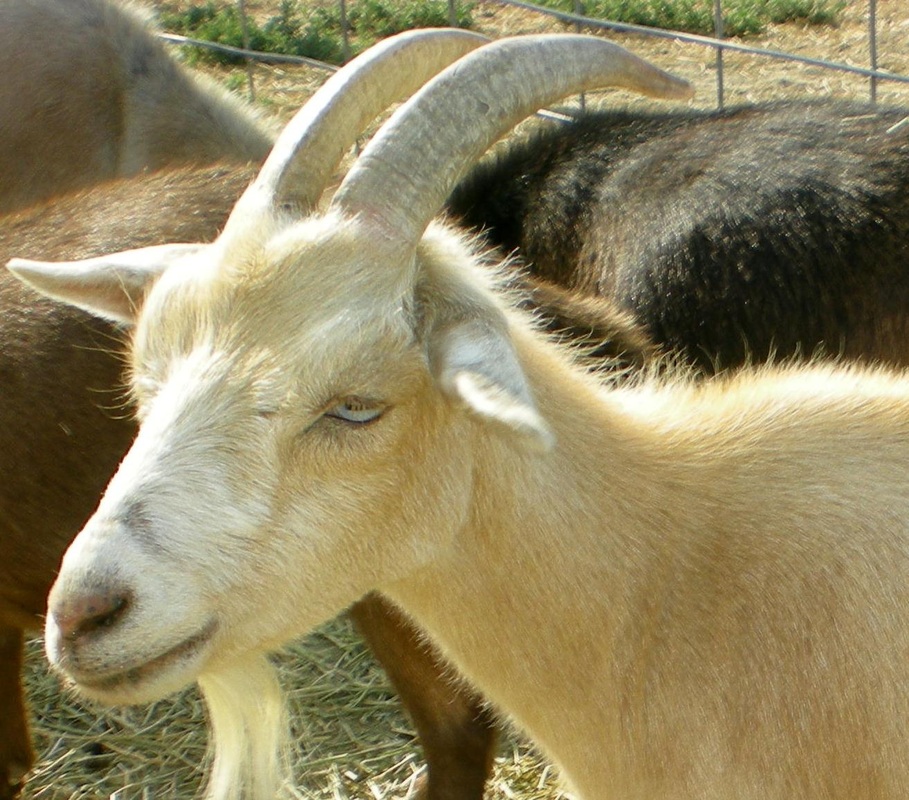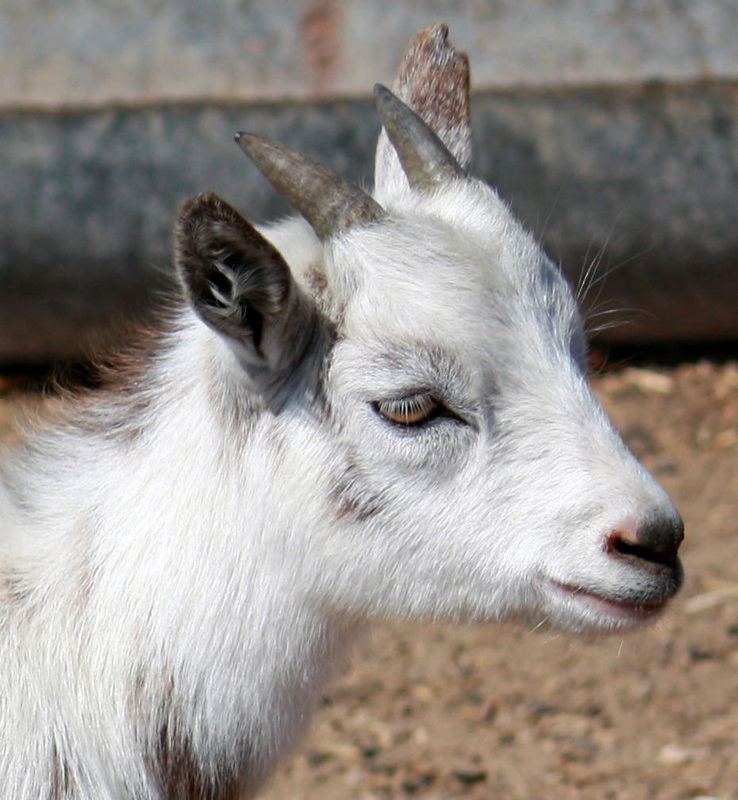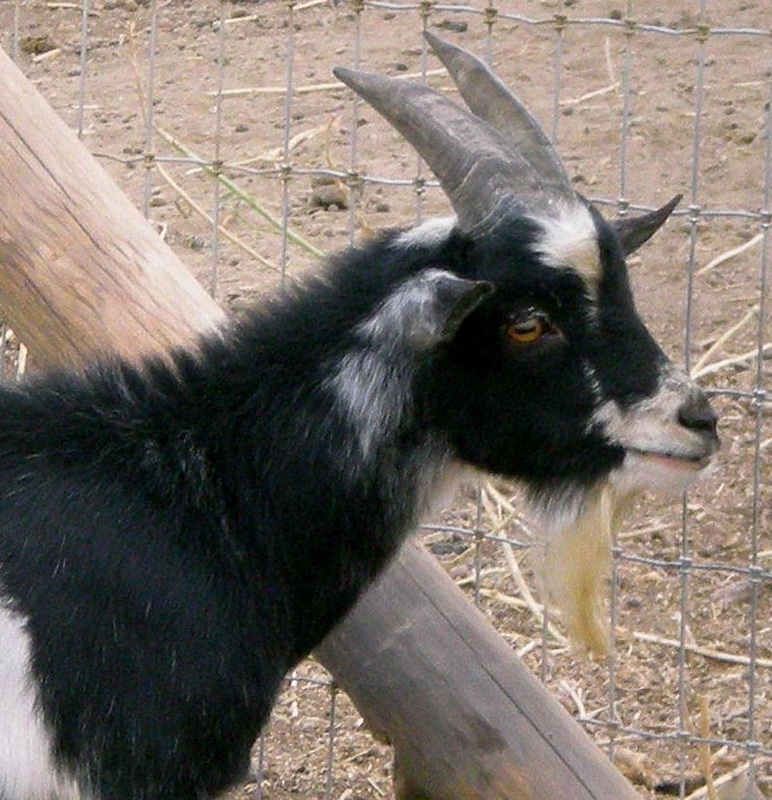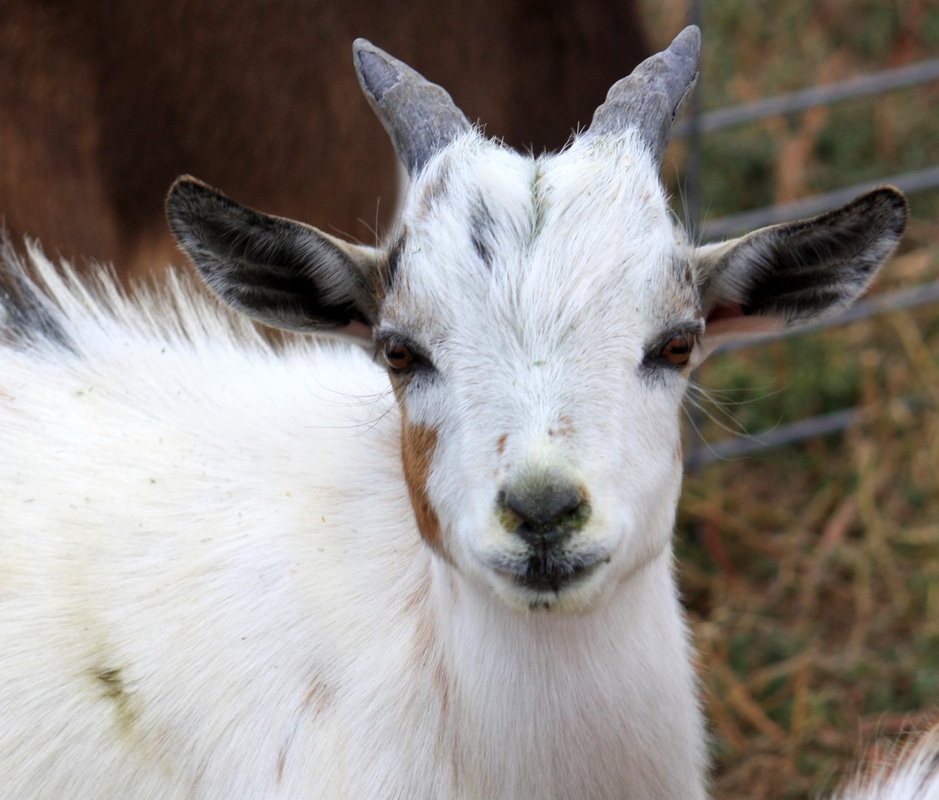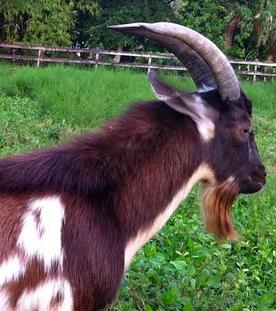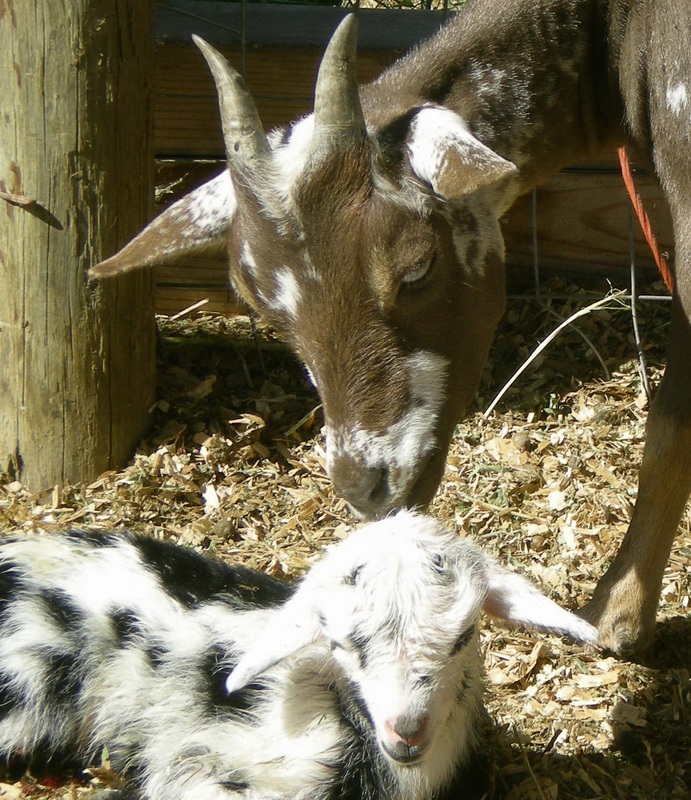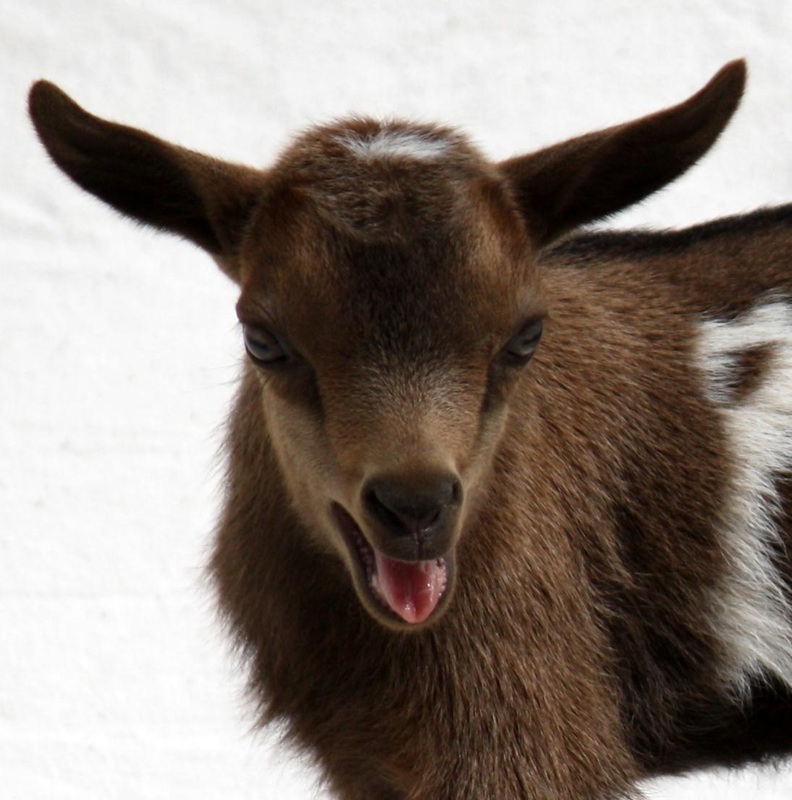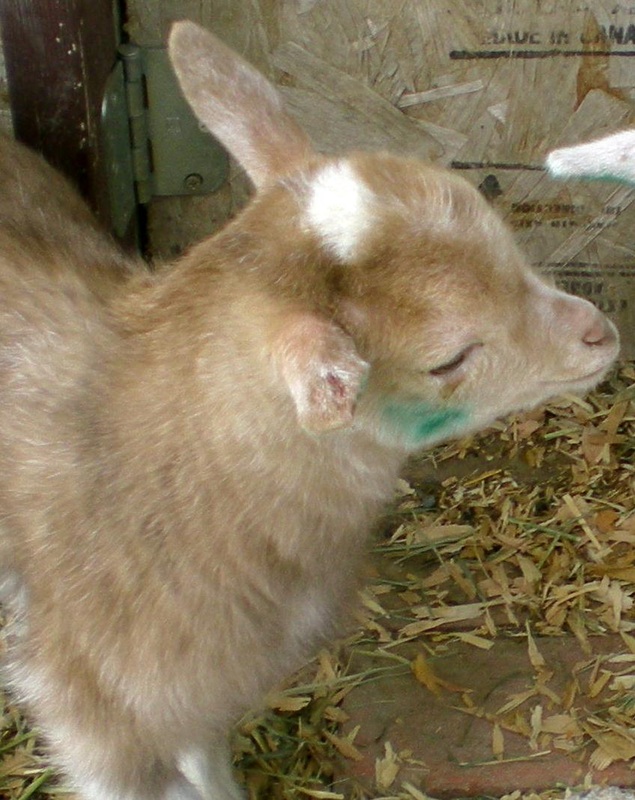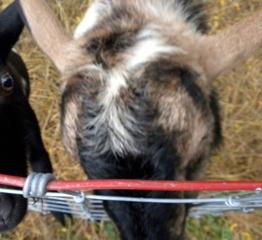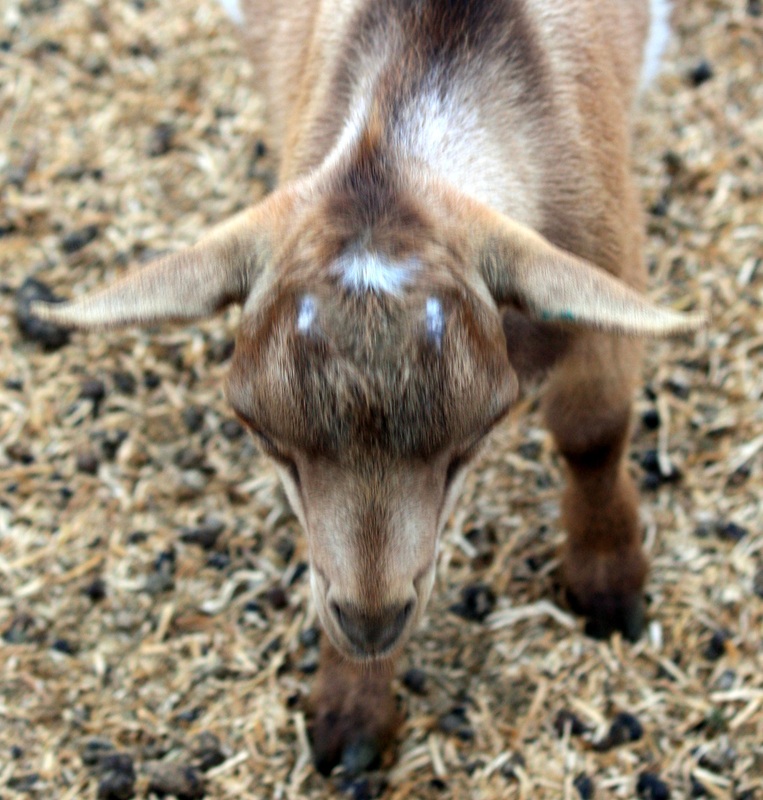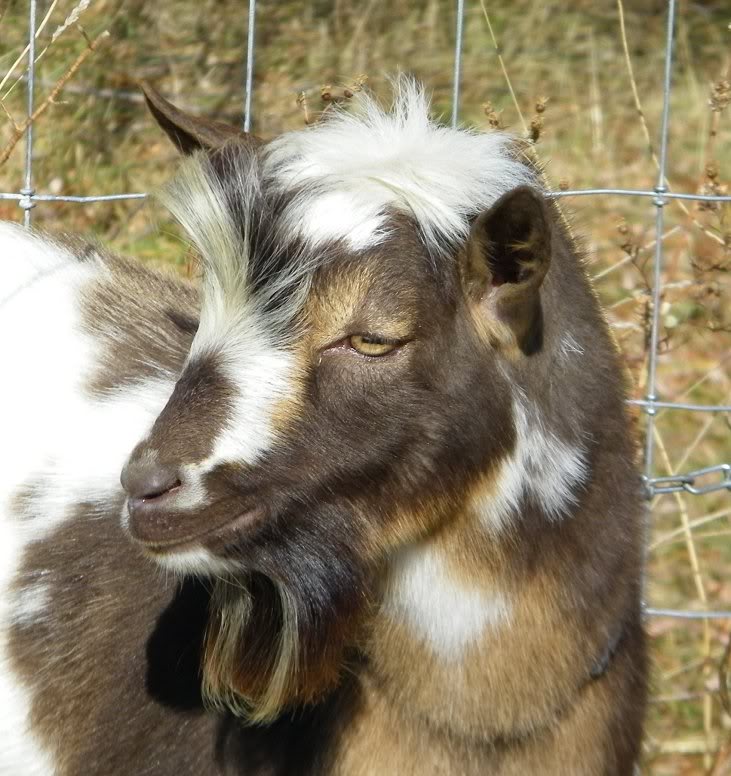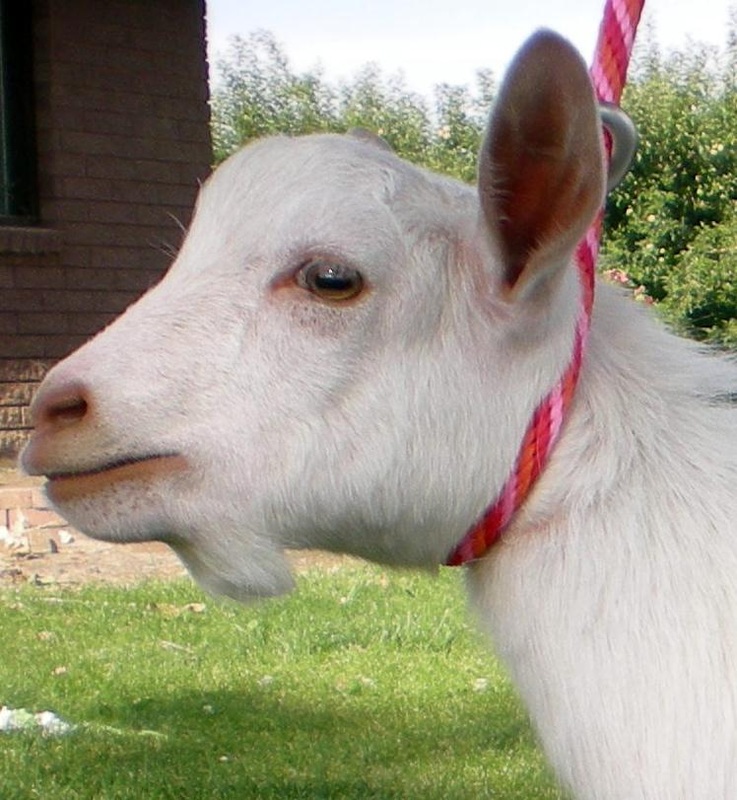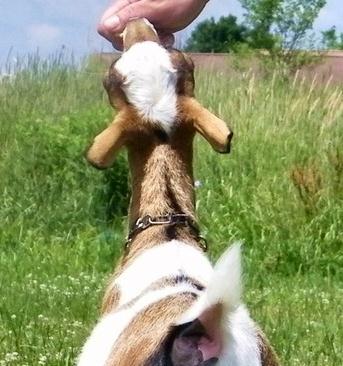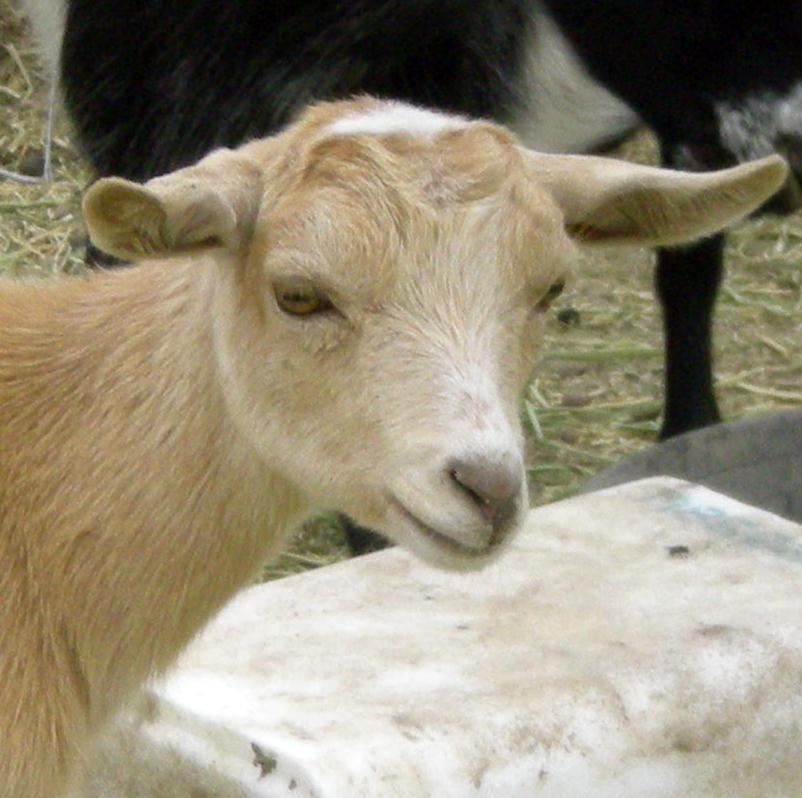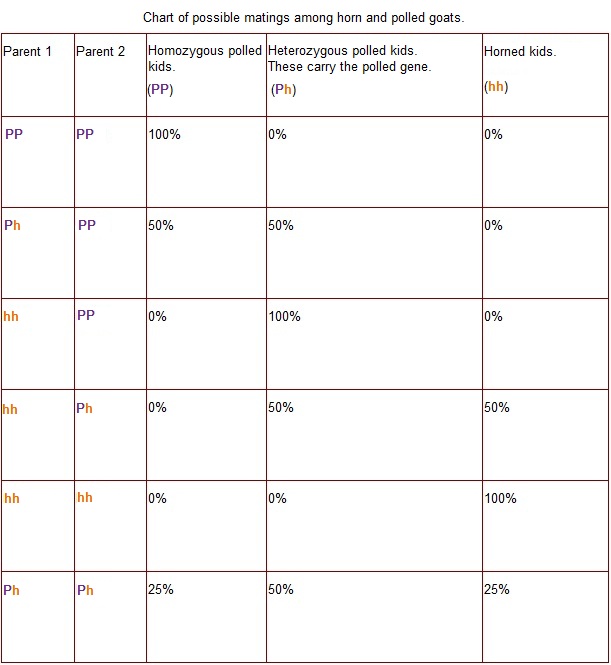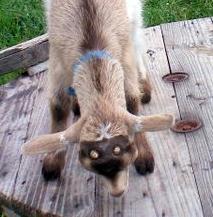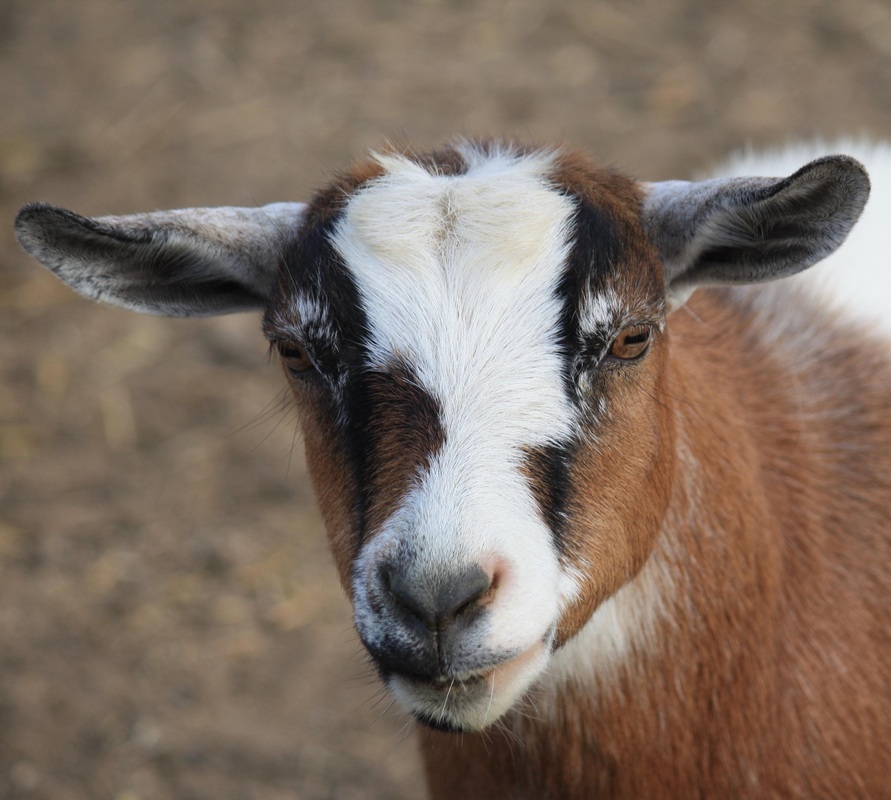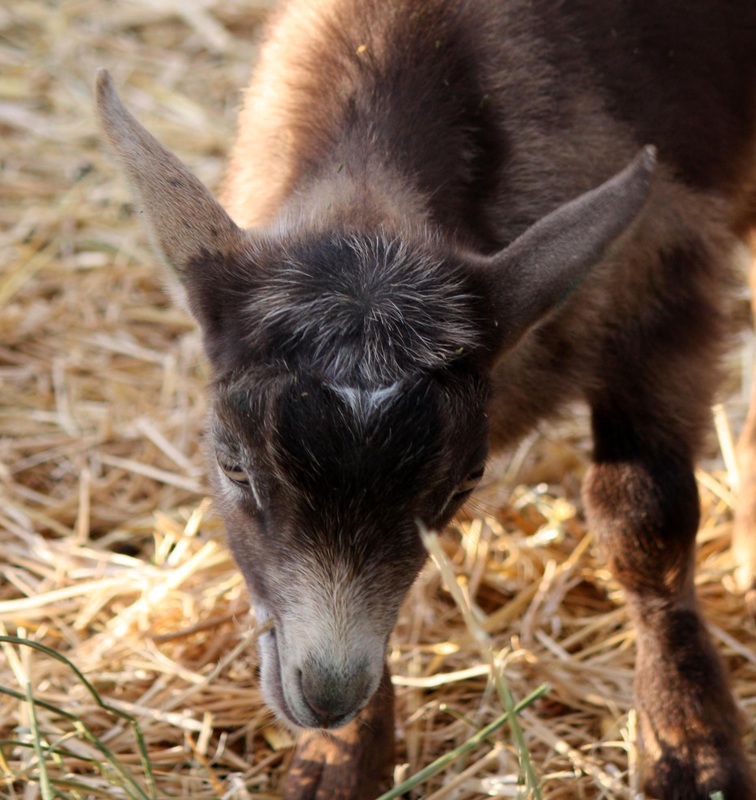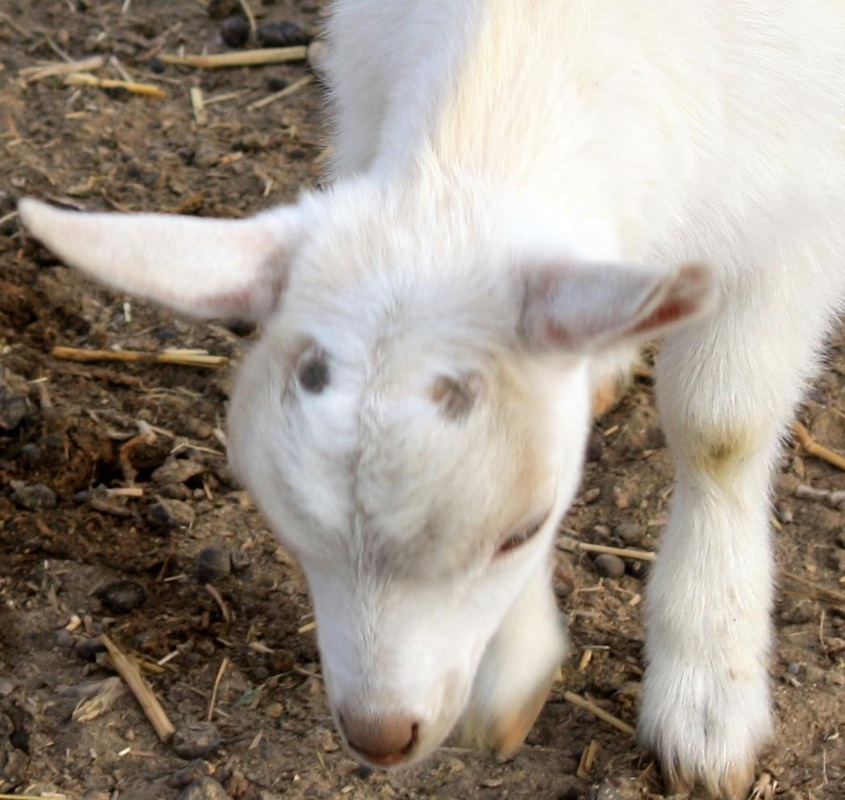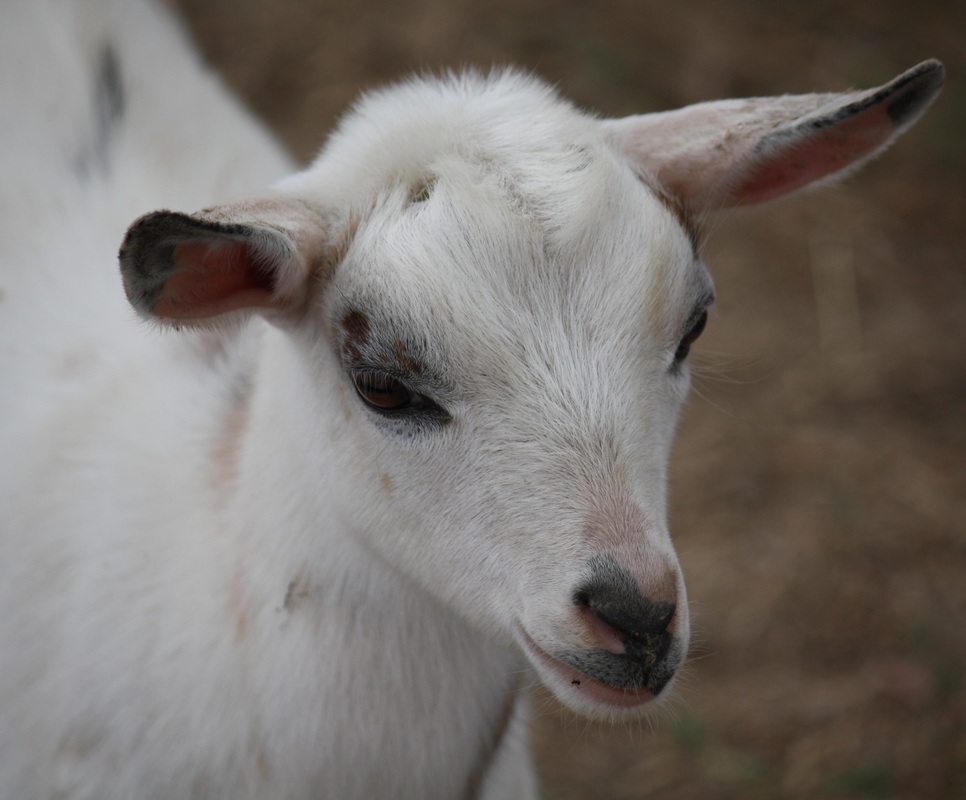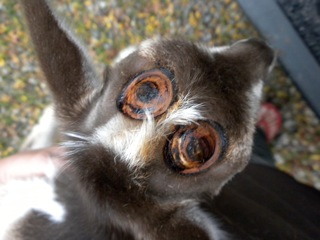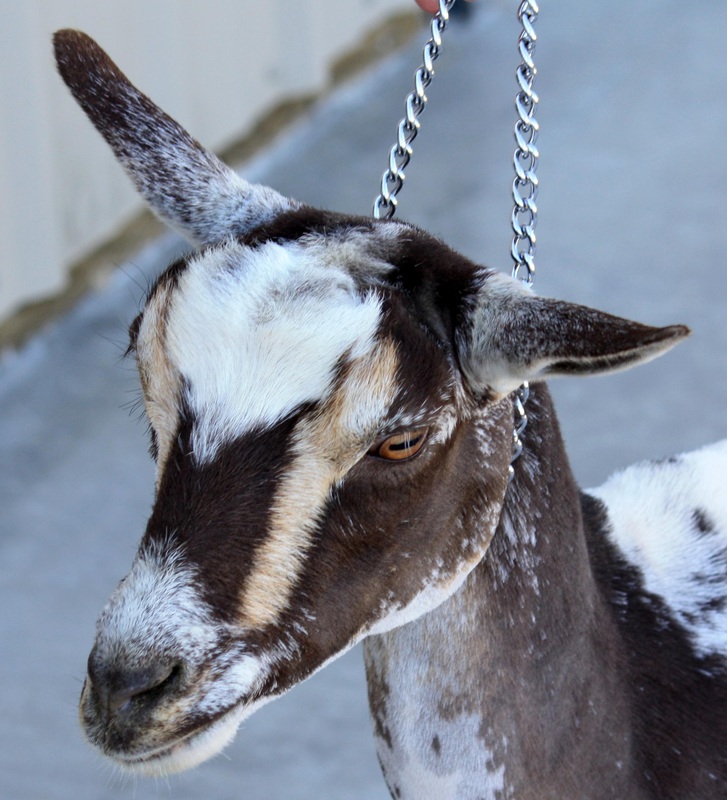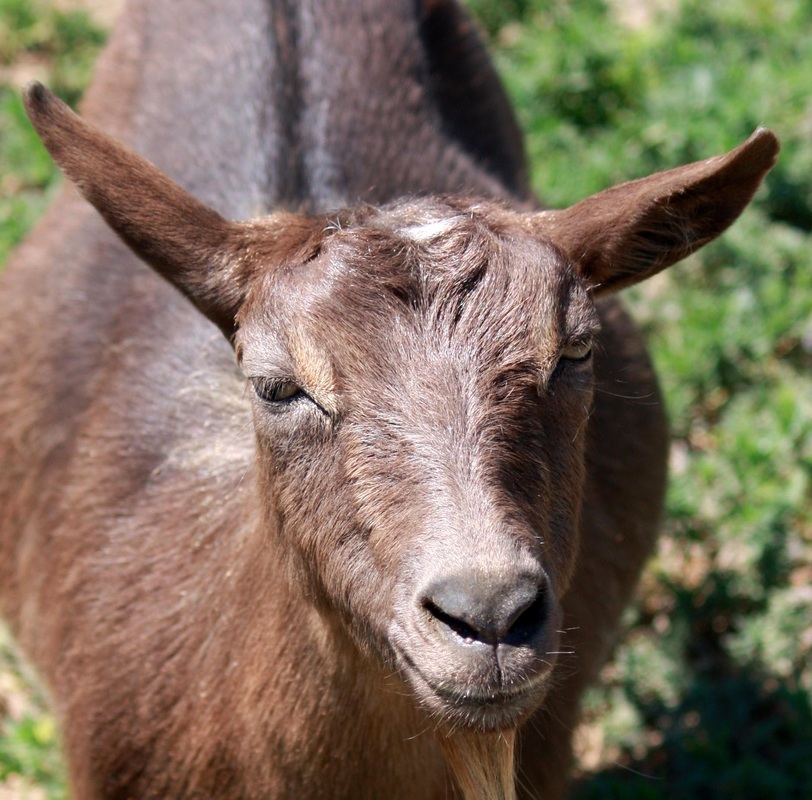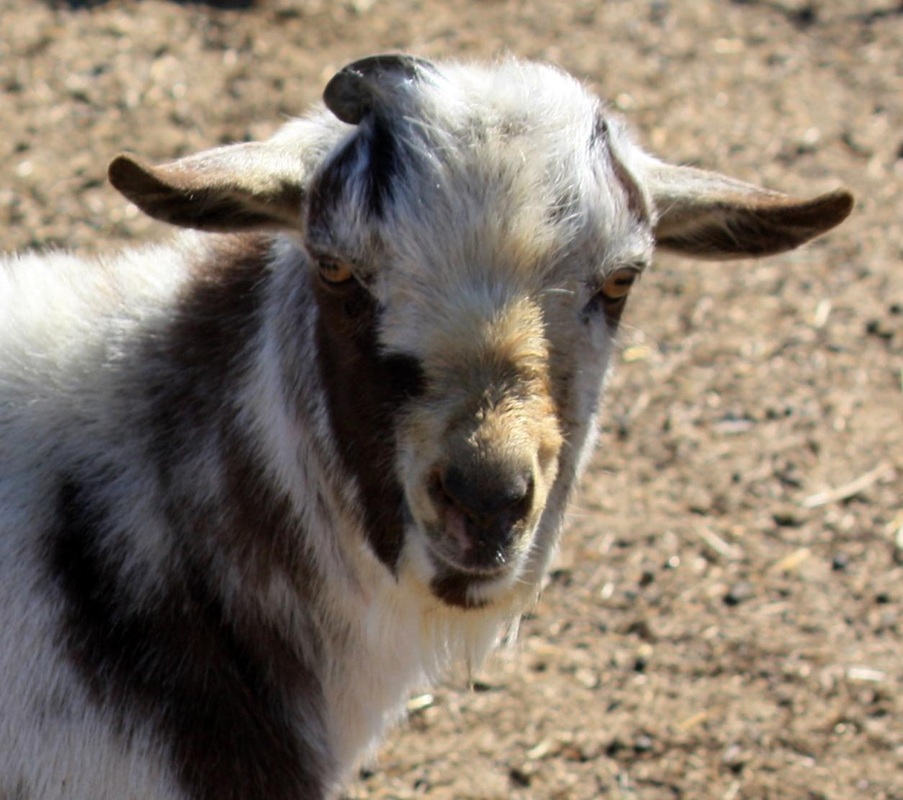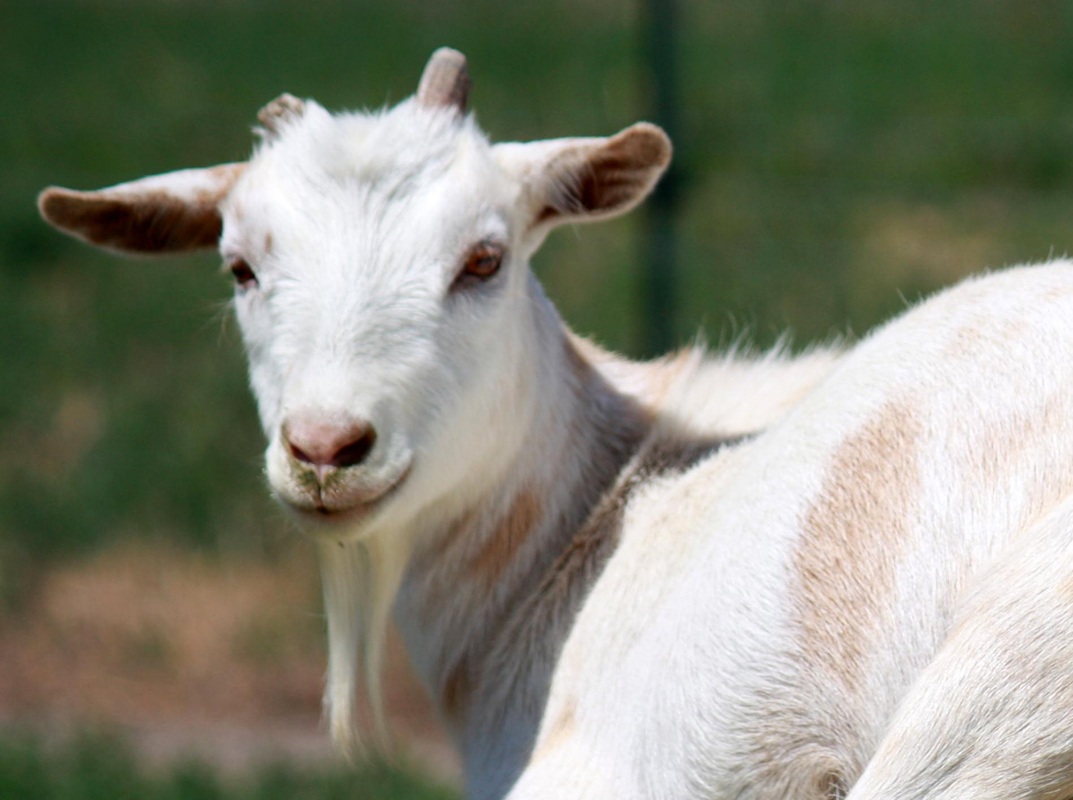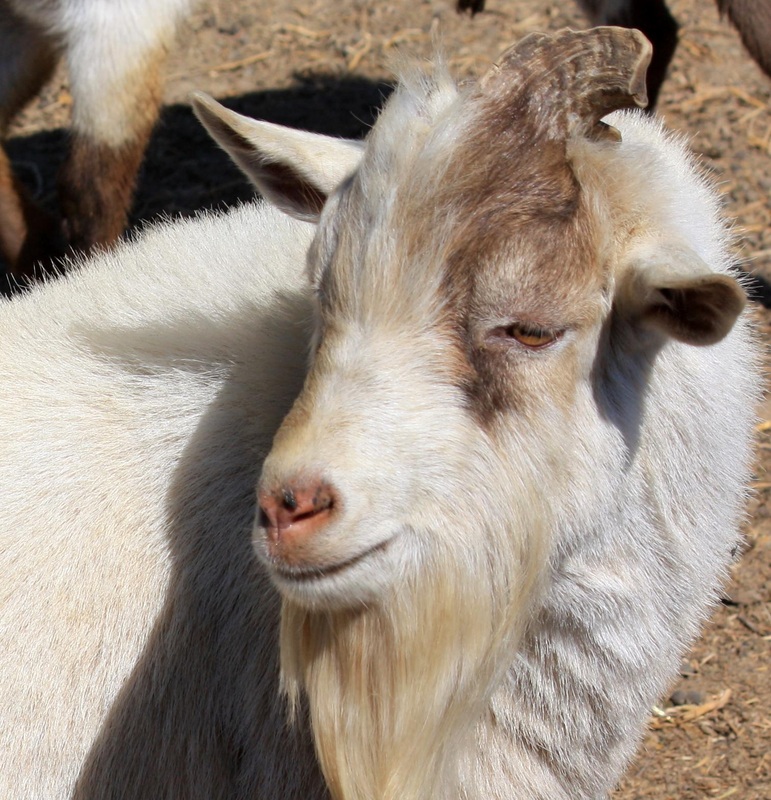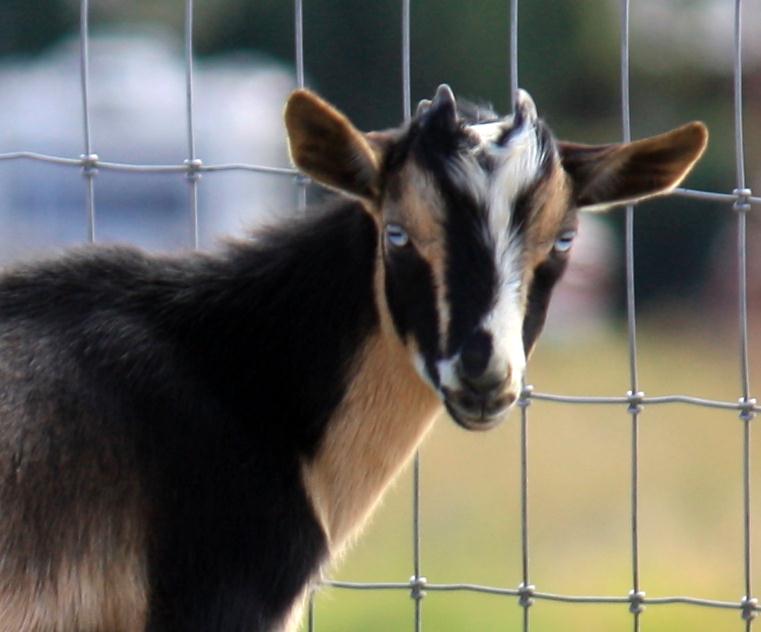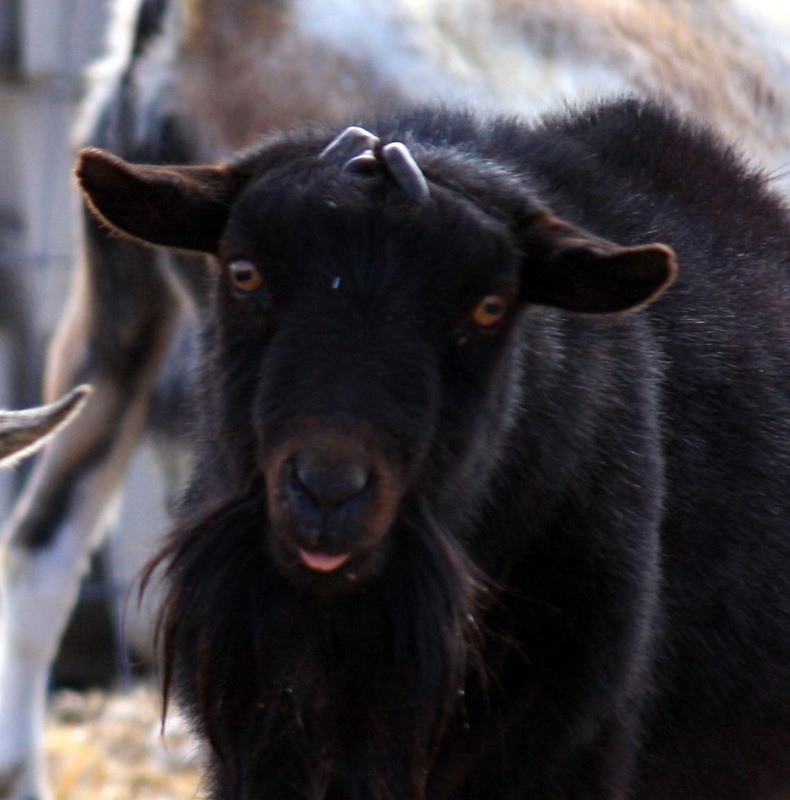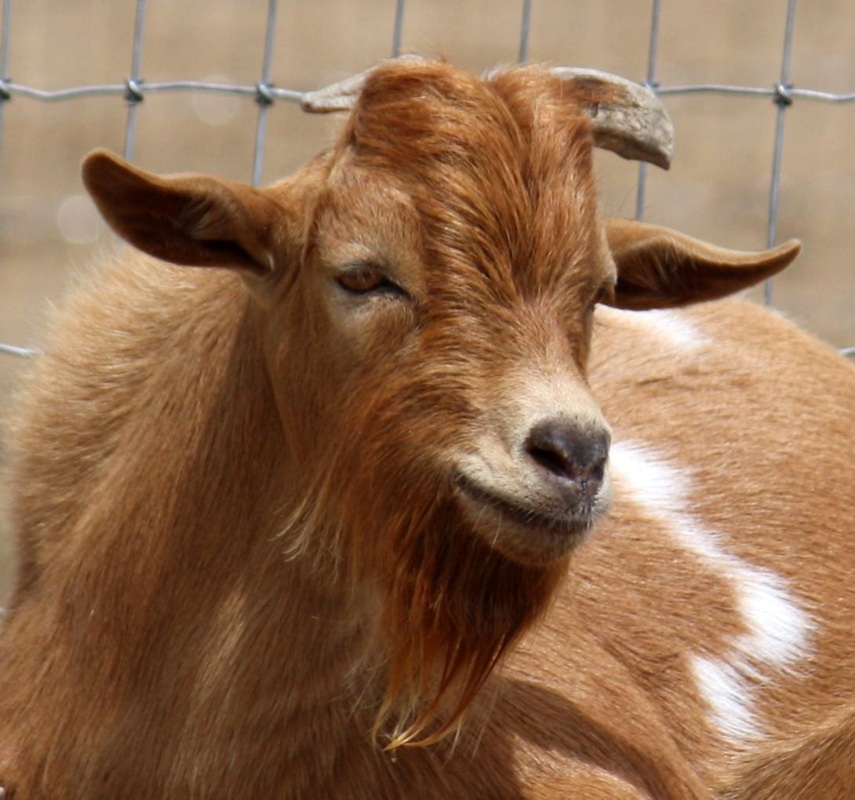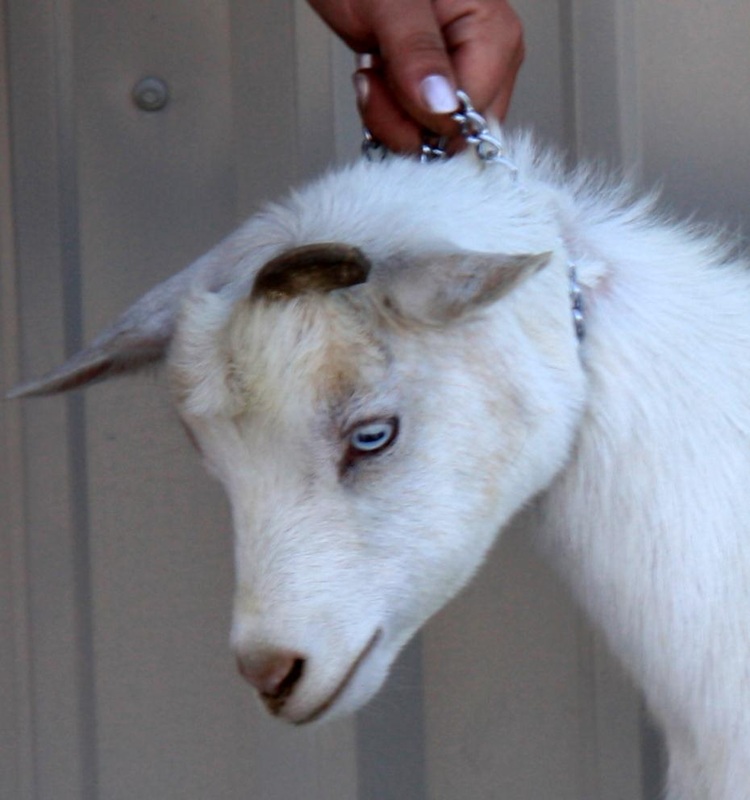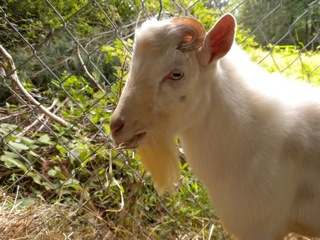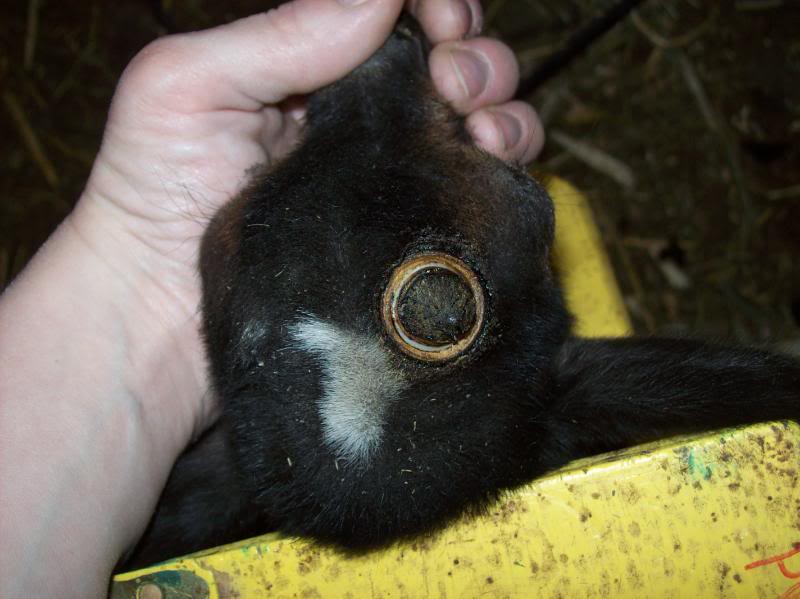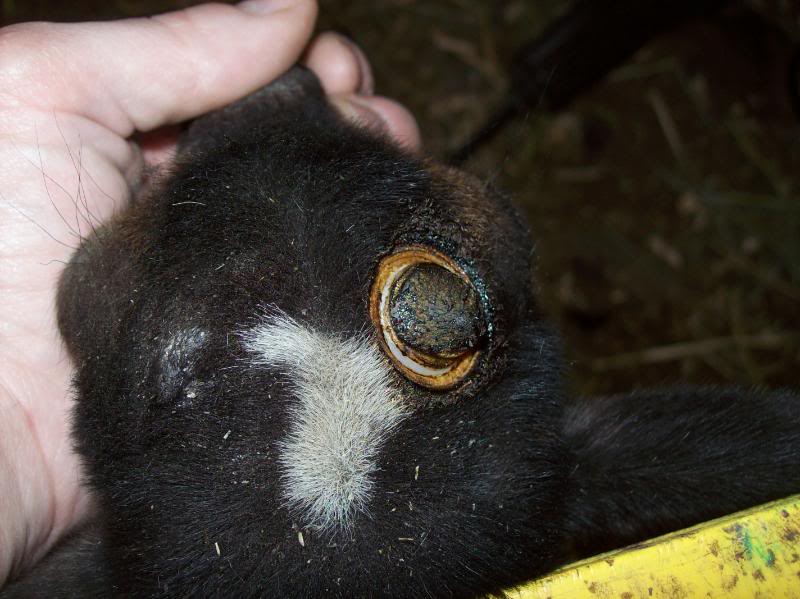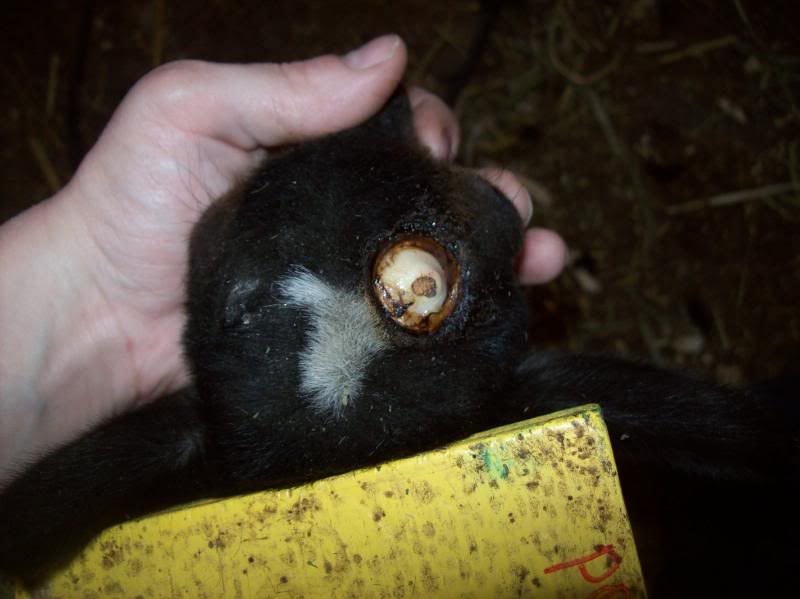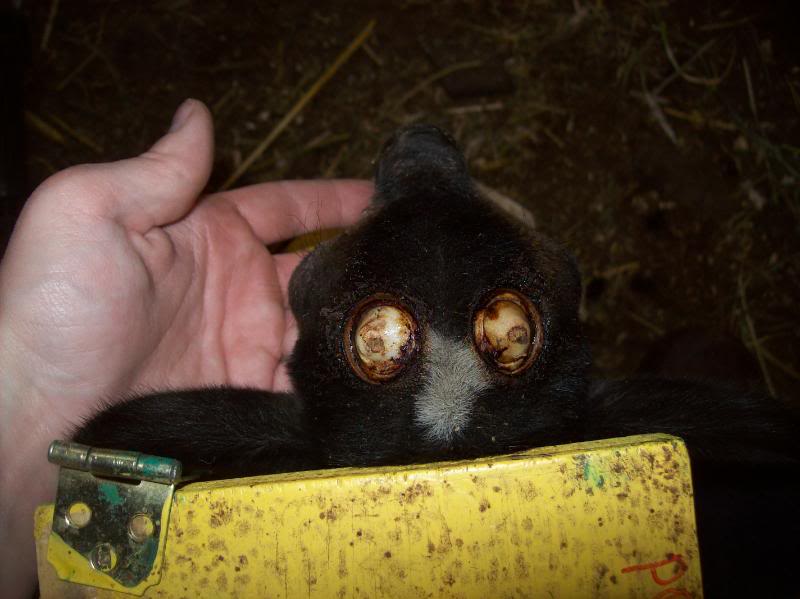Polled & Horned Genetics
Horned
|
Young, adult buck.
|
Horned, 3 month old buckling.
|
Photo courtesy of...
WiJim Goats |
Horned goats.
Most Nigerian Dwarfs are born with horns. If a breeder chooses to leave the kid's horns intact, the horn buds will break through the skin just days after birth. They usually begin growing at a rapid pace. That is why disbudding kids early on is important. It is believed that the large blood vessels in the horns are a natural way for the goat to regulate and cool it's body temperature by releasing heat.
Polled
|
Photo courtesy of...
Freedom Star Farm |
|
Photo courtesy of...
Zanzabeez Nigerians |
Photo courtesy of...
Zanzabeez Nigerians |
Polled Goats
A goat that is born naturally hornless is called polled. There is no disbudding or dehorning required for these goats. In place of the horns, there are two rounded bumps or nubs that you can see and feel. Newborn or very young polled kids can often be differentiated among horned kids by the lack of "swirl" of hair where the horn bud would come in. Most horned kids will have small hair swirls where the buds will start to break through the skin; polled kids usually lack the swirls. As far as health issues go, there is a possible intersex gene linked to the polled gene. Breeding polled to polled may increase chance of intersex kids. More research is needed.
The polled gene is a dominant gene. Just like blue eyes. This means that a goat can only be polled if one or both of it's parents are polled.
PP - Homozygous polled. Cannot produce horned offspring, regardless of mate.
Ph - Heterozygous polled. Can produce both polled and horned offspring, unless bred to a homozygous polled mate.
hh - Horned. Cannot produce polled offspring unless bred to a polled mate.
Disbudded
Disbudded Goats
Goats that have been disbudded have had their horn buds removed as a kid. Usually within the first week of life. Most breeders use an electric disbudder specifically designed to burn and kill the horn tissue on the young kids.
Scurs
|
Photo courtesy of...
Freedom Star Farm |
What are scurs?
Scurs happen from improper disbudding or dehorning that did not remove or kill all the horn tissue. The leftover tissue will develop and grow overtime, often in an unsual shape. Scurs can come in many different shapes and sizes, from little nubs to large curls. Some of these scurs can become dangerous to the goat if they start to curl around into the head or face. They are unsightly and tend to break easier or get bumped off sometimes causing an open wound, blood loss, or possibly infection if left untreated. Proper disbudding is crucial to preventing scurs.
The disbudding procedure.
Done with an electric dehorning iron. This is a perfect disbudding job.
Huge thank you to Phoenix Rising Farm for the use of their photos!
